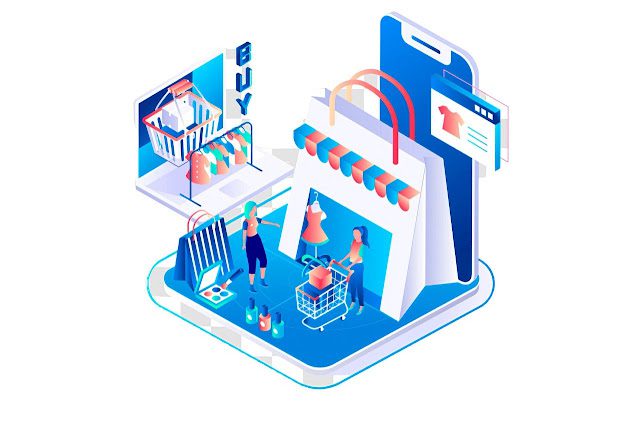Social media followed by e-commerce or D2C sales via their website. (Social commerce! D2C brands need to give this a think!)
So let’s revise the mechanism of social media and e-commerce in the shopping journey….in the past?….
Social media has been celebrated as an asset to connect with friends and loved ones. Social media companies later discovered a method to monetise their platforms, by selling ad space to third party companies handing over access to analytical data (likes, shares, comments, reviews) on consumer behaviour. This strategy fostered brands to leverage this data to create personalised ads for social media users, with the aim to influence them to buy their desired products. However at the end they were directed to their brand website, followed by the never-ending lengthy process. In fact brands would use social media to spur conversations with customers to seek their views and recommendations about their products or act upon any customer grievances. All the more they would even connect with their fellow competitors resulting in hilarious chats for the public to relish and share, which ultimately resulted in publicity for both the brands!
Coming back to social commerce!
Social commerce allows social media users to cherish their social media activities whilst also shop products at the same time. Thus streamlining the shopping process and attracting the customer attention span (which is relatively extremely short!) Social commerce saves a significant amount of time for the shopper and increases the scope of transaction and monetisation for the brand. Using the most apt and convenient platform with adequate calls to action or glamours influencers are just the winning success formula. Social commerce has been dominant and prevalent in the Far East like China, Korea and so forth. China, utilising its lionised superapp WeChat sold products and services that were approximately worth $250 billion. Surely a validation of its success in the Asian markets.
However it has been penetrating into Western markets like USA, accelerated by Coivd 19 and the worldwide lockdowns . Facebook via Facebook Shops, Instagram via Instagram shops, Tik Tok Shopping, Pinterest all are platforms renowned to propagate social commerce, as sellers use these platforms to successfully sell their products. Be it cute iPhone covers to vibrant beauty products, home decor, grocery or radical apparels and so forth.
One can enjoy the offerings of social media and concurrently purchase products. Social commerce takes advantage of impulse buying as consumers surf through social media. Today is the age of instant gratification that is reasonably common amongst the Gen Y and Z, therefore greater chances of monetisation for the brand. Buyers can make informed decisions based on accessible data such as likes, shares, recommendations and reviews of previous shoppers or their friends recommendations. Other aspects of social commerce include the creation of a community of buyers.
SME’s, MSME’s or new smaller entrepreneurs can benefit from social commerce as they get access to a colossal target audience at remarkably low costs/ low cost of customer acquisition and avoid the complexities of selling via e-commerce or retail stores, thus streamlining the whole process for themselves. Entrepreneurs can make use of catalogues and other inherent social media tools on their respective platform and videos to build trust amongst potential customers or leverage resellers to create leads. They get access to accelerating leads, create brand awareness, cement longer customer relationships, brand loyalty and trust! They can virtually connect with their clients as well via chat bots or AI chat bots that answer the FAQ’s. SME’s and MSMEs have been presented with the golden opportunity to use these platforms to join the organised sector and survive the pandemic. They play a major role in the thriving economy and global trade.
As brands get access to massive amounts of data about each customer, brands can customise or personalise or curate products for their clients. Social commerce in developing countries provides low income and price sensitive customers access to reasonably priced and quality products. In India social commerce has the sovereignty to empower 40 million SME’s and small entrepreneurs (Bain and company, 2020). It has been spreading like fire in Tier 2 and 3 cities. Small business in India are deriving 35% of sales via social commerce.The customers feel part of a community. In fact the concept of resellers ( stimulated by Meesho) is gaining prevalence in countries like India where they can sell products of different merchants via their social media handles to family, friends and wider networks, earning up to 5000 to 10,000 rupees a month. Encouraging women to become first time entrepreneurs and earners of the family. The concept of resellers helps brands to strengthen the trust factor and credibility of their products. In addition get access to a wider audience. Group buying has emerged as a solution for individuals belonging to the low income strata so they can purchase items in bulk at low prices.
Selling of products can take place during livestream events (famously called live commerce) common in Asia. Buyers can purchase products in real time as they appear in the video and connect with the KOL (Key opinion leaders) or influencers. Around 60% of Chinese are ready to buy products that are promoted by the KOLs. The livestream events are orchestrated by WeChat, Alibaba’s Tmall selling products from a plethora of brands from adidas to Burberry or Dior. Tencent and JD.com have joined the bandwagon as well. Video game live streaming platforms like Douyu and Huya made sure to take advantage of this opportunity!
Whilst social commerce is gaining traction around the world. A stable infrastructure needs to be created around it. There is a need to ensure streamlined process for order management, payments gateways and logistics! There are startups around the world catering to such infrastructural tools and solutions. In addition many more startups can enter this space in the future. For instance page365 that caters to providing shipping services and customer services. Also there can be possibilities of a seller selling counterfeits and so forth, hence their is a requirement of rules and regulations for social commerce. So this just seems the beginning for social commerce but one thing is clear, its here to stay!


